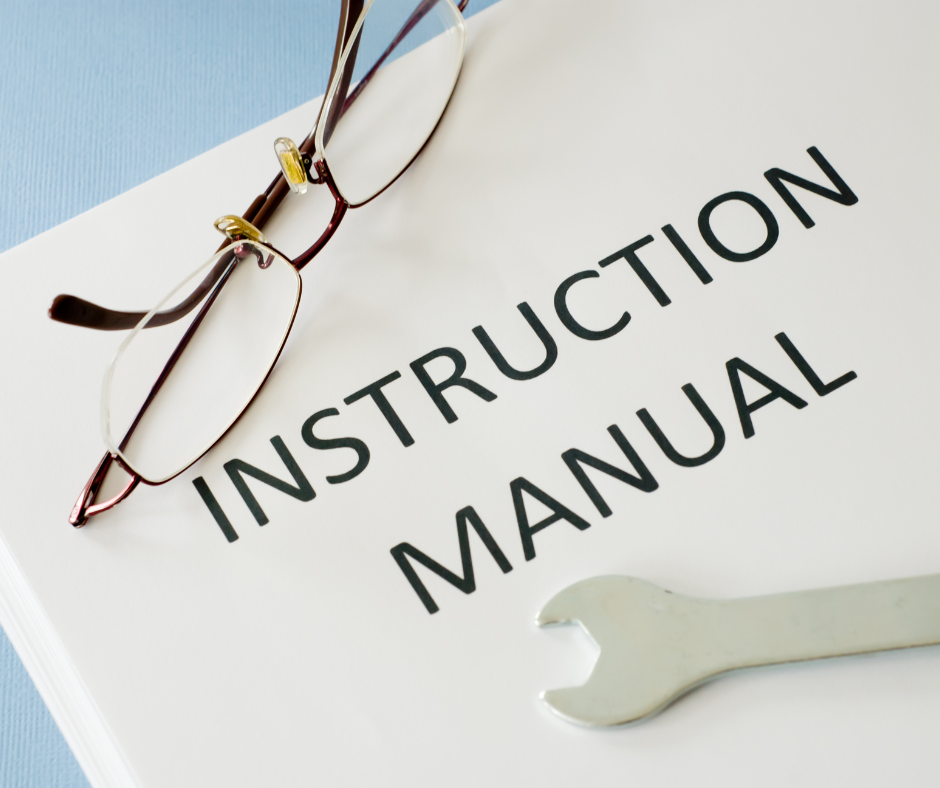
Key Takeaway:
- Employee handbooks are crucial for Real Estate and Rental and Leasing companies: Handbooks ensure compliance with legal requirements, define employee rights and responsibilities, and establish company policies and procedures.
- An effective employee handbook includes job descriptions and expectations, compensation and benefits, performance reviews and evaluations, harassment and discrimination policies, and a code of conduct with disciplinary actions. For real estate companies, having a well-crafted employee handbook can be crucial for ensuring smooth operations and legal compliance.
- Creating an employee handbook best practices include seeking legal advice and review, tailoring it to the company’s culture and needs, communicating it effectively to employees, and continuously updating and revising it as necessary.
Growing your real estate or rental and leasing business requires more than just finding good employees; it requires creating a positive work environment. You need an employee handbook to provide guidance and set expectations for your workers. Here we discuss the key elements for handbooks in the real estate and rental and leasing industry.
Importance of Employee Handbooks for Real Estate and Rental and Leasing companies
An Employee Handbook is essential to create clarity and consistency in your Real Estate and Rental and Leasing business. It serves as a guidebook for workers, giving them info and direction on the company’s policies and procedures, and their rights and duties. To make sure it meets legal demands, you must include certain data in the handbook. Also, the handbook should set out employee rights and duties, while defining the company’s policies and procedures.
Ensuring compliance with legal requirements
Maintaining compliance with legal obligations is a vital requirement for Real Estate and Rental and Leasing companies. Employee handbooks can ensure that the company policies are aligned with all legal requirements to avoid any penalties. These handbooks can also provide clear instructions on how to deal with certain situations that align with relevant laws, making it simpler for everyone involved.
Having an employee handbook in place will ensure that all employees have access to information related to their job positions, such as assigned duties, payroll, benefits, and other relevant matters. Furthermore, it can help prevent misunderstandings between employees and employers by outlining the terms and conditions of their employment.
The handbook should cover additional details regarding employment discrimination laws and health and safety regulations. It should also specify the expected professional conduct from all employees while at work or when dealing with clients or other stakeholders. Documenting these policies in writing provides ample protection for both the employer and employees from lawsuits arising out of unintentional misinterpretations. In fact, according to a recent survey conducted by the Society for Human Resource Management (SHRM), around 88% of businesses had an employee handbook in place in 2020. Let’s get one thing straight – employee rights come with responsibilities, unlike cats who believe they have rights without any responsibilities.
Defining employee rights and responsibilities
Employee rights and obligations are clearly defined in the employee handbook for Real Estate and Rental and Leasing companies. This handbook documents the expectations for the employees in terms of attendance, punctuality, behavior, dress code, safety policies, discrimination policies, and more. The employee handbook sets expectations for both employers and employees to ensure a cohesive work culture. It is essential for new hires since it may help them to understand their role better while lessening the need for additional supervision by managers. For businesses in the professional, scientific, and technical services industry, having an employee handbook helps protect them legally by defining workplace standards that are tailored specifically to their organization. In addition to defining employee rights and responsibilities, codes of ethics or conduct can be included in the employee handbook to outline how an employee should interact with clients or customers in a real estate environment. With significant legal implications in real estate transactions that vary from state-to-state level adherence to ethical practices built into the company s daily operations. Without proper guidelines provided by an employee handbook, organizations face repercussions such as lawsuits brought on by disgruntled employees or inefficient work practices due to unclear expectations. That’s why it’s important for finance and insurance companies to have employee handbooks in place and to keep them up-to-date regularly. Don’t risk your business’ legal compliance or miss out on effective communication with your workforce – create and update an employee handbook today! Without company policies and procedures, the workplace would be like a game of dodgeball with no rules, where no one knows what’s going on and everyone is just trying to avoid getting hit.
Establishing company policies and procedures
Creating effective and clear guidelines and regulations is a crucial element of managing a successful firm in the real estate and rental and leasing industry. Establishing intricate policies and protocols in a comprehensive manner helps ensure that all employees adhere to specific standards, thereby ensuring consistency in the quality of services provided to customers.
By outlining everything from standard operating procedures to responsibilities clearly, an employee handbook empowers individuals working in real estate and rental and leasing companies with the knowledge required for optimal day-to-day activities. Inherent within this is the requirement that employees understand company goals, values, objectives, benchmarks, rules, regulations, and expectations.
In addition to laying out a framework upon which any activity surrounding human resources can be predicated such as onboarding new talent or disciplining underperforming workers. The biggest benefit of doing so is developing a highly operative mechanism for communication between management and team members; this alone enhances organizational culture while setting expectations for employees throughout their tenure on their job.
A real case-in-point for understanding the importance of an employee manual in real estate is when staff members invariably become involved in another zone of business at some point during their work tenure. Company-generated materials act as contingency guides instructing workers how they should act if they ever encounter criminal acts like money laundering schemes or frauds perpetrated by clients. Having well-crafted manuals ensures every staff member knows what steps are expected of them should these situations arise.
An effective employee handbook is like a map – it shows you the way and warns you about the dangerous territories.
Components of an Effective Employee Handbook
A comprehensive employee handbook for real estate and rental/leasing companies requires understanding key components. These include:
- Job descriptions/expectations
- Compensation/benefits
- Performance reviews/evaluations
- Harassment/discrimination policies
- Code of conduct
- Disciplinary actions
These sub-sections provide employees with the essential info they need to know.
Job descriptions and expectations
The articulation of roles and expectations is a vital component of any employee handbook in real estate and rental leasing industries. It ensures employees understand their job responsibilities, company vision, and values. Defining clear goals and objectives sets the tone for a productive workplace and minimizes misunderstandings that may lead to job dissatisfaction or burnout.
Setting specific targets for each employee creates a clear pathway of accountability within the organization. Job descriptions should include details about daily tasks, long-term goals, and performance metrics. Additionally, outlining expectations regarding attendance, punctuality, dress code, communication protocols with clients reinforces professionalism.
Moreover, clearly defining advancement opportunities within the company is essential because it outlines the requisite knowledge to qualify for promotions. Even so, creating reasonable timelines for career advancement demonstrates that your company invests in its employees growth and development.
Compensation and benefits: Where you learn how to negotiate for a raise and realize that your office snack supply counts as a perk.
Compensation and benefits
This section deals with the rewards and perks that an organization offers its employees in return for their services. Compensation and associated offerings such as benefits, bonuses, stock options are crucial to an employee’s satisfaction and overall motivation.
- Ensure that compensation packages align with industry standards.
- Provide comprehensive benefits packages (such as health insurance, paid time off).
- Offer performance-based bonuses and incentives.
- Create transparency around payment processes.
Organizations can offer non-traditional incentives like flexible work schedules and remote-work culture to keep the workforce engaged. According to a report by City A.M., three-quarters of employees feel that workplace perks are critical for loyalty towards employers. If you are looking for tips on creating employee handbooks, the experts at Airmason have put together a helpful guide specifically for manufacturing companies. Performance reviews – because sometimes brutal honesty is the only way to get someone to stop wearing socks with sandals.
Performance reviews and evaluations
Assessing Employee Performance: Enhancing Organizational Success To ensure employee development and enhance organizational success, performance reviews and evaluations are essential components. If you are incorporating this into your construction of buildings company’s employee handbook, here are three points to consider:
- You can find more information about employee handbooks for construction of buildings companies on our blog.
Employee handbooks are crucial for any company, including furniture and home furnishings stores companies. It is important to establish regular review cycles to provide feedback on strengths and areas of improvement.
Effective implementation of these guidelines will lead to more engaged employees and measurable productivity improvements. As a pro tip, encourage an open dialogue between employees and managers during their review meetings for increased transparency. Harassment and discrimination policies: Because nothing says ‘We value our employees’ like a 50-page legal document full of corporate jargon.
Harassment and discrimination policies
Inclusivity and Fairness in the Workplace is a vital aspect that must be highlighted in every Employee Handbook for Real Estate and Rental and Leasing companies. Providing clear policies on Harassment and Discrimination is essential to ensure employees understand what is expected of them in their interactions with colleagues, customers, and clients. These policies should include an explanation of what constitutes harassment and discrimination, specific reporting procedures, and potential consequences for offenders. It is critical to reiterate that Harassment and Discrimination are unacceptable behaviors that can create hostile work environments. Employees must know these policies to report any incidents promptly. In addition, both employers and employees must foster a culture of respect, tolerance, understanding, and open communication. It is important to review documents regularly as society changes, constantly so should these policies. Make sure all employees are informed about these updates before enforcing them. There have been several instances of workplace harassment where reports were made very late because employees didn’t feel comfortable about how to or who to report it too. Creating easy-to-understand reporting procedures will help make it easier for employees to voice their opinions regarding such matters without fear or intimidation. Breaking the code of conduct in the employee handbook is like trying to sneak past a security guard with a neon sign that says ‘I’m breaking the rules’.
Code of conduct and disciplinary actions
As an essential part of an Employee Handbook, guidelines for employee conduct and the consequences of violations must be clearly defined. The Behavioral Standards Policy outlines the expectations of behavior and conduct for all employees within a company. Violations of this policy may result in disciplinary action, including verbal warnings, written warnings, suspension or even termination. A progressive discipline system may be used depending on the severity and frequency of the breach.
In addition to providing clear guidelines for employee conduct, it is crucial to outline a fair and consistent disciplinary process for enforcing these standards. This may include an investigation process to gather evidence and determine if a violation occurred, as well as the steps involved in implementing disciplinary action if needed. Employees must also be aware of their rights during the process. A proper understanding of these policies can help prevent potential issues while promoting a positive work culture. By creating a strong foundation of expected behavior and a fair enforcement strategy, companies can set their employees up for success while mitigating risk management challenges. Incorporating these policies within your Employee Handbook keeps everyone on the same page while demonstrating that your company values its employees’ contributions and holds everyone accountable equally in pursuit of business success. For construction companies, it is important to have specific policies in place that address the unique challenges of the industry. Check out this resource on employee handbooks for construction companies. Creating an employee handbook is like writing a manual for a robot uprising, except the robots are employees and they just want fair treatment and clear guidelines.
Best practices for Creating Employee Handbooks
Legal advice? Get it.
Review? Do it. Tailor the handbook to your company’s culture and needs. Communicate the handbook to employees. Keep it updated.
Revise as necessary.
To have the best employee handbook for your real estate or rental and leasing company, follow these best practices.
Seek legal advice and review
It’s a recommended practice to seek professional legal guidance and scrutiny while drafting an employee handbook for real estate and rental and leasing companies. Legal advisors can assist in creating exclusive policies that adhere to state and federal statutes, avoiding any potential lawsuits against the company. Reviewing the handbook by a legal team before its release protects employees’ interests while at the same time lawful execution of business. Additionally, having expert advice on hand ensures that companies develop adequate policies regarding privacy and confidentiality, harassment-free workplaces, benefit distributions and absence management.
Incorporating informed strategies for creating Employee Handbooks substantially reduces employers’ chances of facing litigations from their staff members. It is better when such rules are well-documented with proper guidance to cover all essential amenities required in the workplace.
Creating an employee handbook without considering your company’s culture and needs is like wearing a tuxedo to a beach party.
Tailor to the company’s culture and needs
One crucial aspect of creating an employee handbook is adapting it to suit the unique culture and needs of a company. It is essential to craft policies and guidelines that resonate with the values and practices upheld by the organization. This process should consider aspects such as a company’s history, vision, size, industry, and geographic location. Creating an employee handbook tailored to a company’s culture and needs portrays its commitment to cultivating a healthy work environment. It aids in communicating the company’s expectations while setting guidelines that promote productivity and accountability among employees. The tone, language, design, and content of an employee handbook should reflect a company’s culture while providing clear directives for employees. When adapting a handbook to a particular organizational culture and needs, it is necessary first to understand its history and values. This understanding provides insight into identifying key topics that are critical to the business operation. Additionally, examining existing policies helps identify areas for improvement in crafting new or revised policies for inclusion in the handbook. Many organizations have achieved success by customizing their handbooks from experience. A CEO once reported having updated their employee manual regularly after monitoring trends in workplace issues faced by his employees over the years through conversations during lunch breaks or drinks after hours. This helped tailor major components of their handbook based on real-time experiences of working relationships among staff so they could ensure relevant revisions were made annually instead of relying on templates used by competitors or other businesses within their industrial park. Make the employee handbook as easy to read as a comic book, minus the superheroes and villains.
Communicate the handbook effectively to employees
Effective communication of the handbook to the employees is crucial for its success. Employers must ensure that their employees are aware of the handbook’s existence, understand its content and purpose, and have easy access to it. This can be achieved by creating a comprehensive communication plan that includes clear instructions on how to access the handbook. To effectively communicate the handbook, employers should consider hosting a training session for the employees where they can learn about the policies and procedures outlined in the document. The training session should also explain why it is crucial for employees to abide by these policies. Another approach to communicating the handbook is uploading it to an easily accessible shared platform where all employees can access it at any time. Employers could also consider printing hard copies for new hires joining their workforce or those with limited digital access. For more information on employee handbooks for utilities companies, check out this article: Employee Handbooks for Utilities Companies. Employers can conduct routine surveys or reviews to evaluate employee engagement with the handbook. In case of conflicts arising from violations of any policy, make sure there is clarity regarding expectations set out in correspondence with employees. According to recent studies carried out by The Society for Human Resource Management (SHRM), approximately 80% of small businesses do not possess employee handbooks. However, these guidebooks set standards and constitute best practice as they assist in promoting an efficient work environment while reducing inconsistent application of rules within companies. You never know when a new HR law will pop up, so keep that handbook updated or risk being sued faster than you can say wrongful termination.
Continuously update and revise the handbook as necessary
To keep your employee handbook up-to-date, it is crucial that you continuously review and amend it as required. This ensures that the information in the handbook remains accurate and relevant to your employees. It is recommended to schedule a periodic review of the handbook policies to ensure compliance with changing laws, regulations or company policies. One way to achieve this goal is by actively encouraging employee feedback and involving them in updating the employee handbook. If changes occur in the company s operations or practices, these must also be reflected in the handbook. Organizations must make sure they maintain their consistency while implementing changes across their organisation. Additionally, annual reminders should be given to all employees about any updated document and their implications on their respective roles. In doing so, companies can avoid potential legal problems resulting from inaccurate information being provided in an outdated manual of procedures.
As an example, there have been instances where outdated employee handbooks contained wrong data and caused confusion among employees regarding company policies which led to a dispute between workers and upper management. Updating your handbook regularly before any unexpected controversy arises will help to minimize such risks.
Five Facts About Employee Handbooks for Real Estate and Rental and Leasing Companies:
- An employee handbook provides a comprehensive guide for company policies, procedures, and expectations. (Source: The Balance Small Business)
- Employee handbooks can help protect the company from legal liability by clearly outlining rules and regulations. If you are running a machinery manufacturing company, it’s important to create employee handbooks for your staff to ensure they are aware of safety protocols and company policies. (Source: The National Law Review)
- Real estate and rental and leasing companies may have specific policies relating to property management, tenant rights, and fair housing laws included in their employee handbooks. (Source: National Association of Realtors)
- Employee handbooks can provide guidance on ethical behavior and professional standards expected from employees in the industry. (Source: Real Estate Express)
- Regular updates to the employee handbook can ensure that it remains relevant and useful for employees, reflecting changes in laws, policies, and company practices. (Source: HR Morning)
FAQs about Employee Handbooks For Real Estate And Rental And Leasing Companies
What is an Employee Handbook for Real Estate and Rental and Leasing companies?
An employee handbook for real estate and rental and leasing companies serves as a comprehensive guide for employees working in the real estate industry and rental/leasing operations.
What should be included in an Employee Handbook for Real Estate and Rental and Leasing companies?
An Employee Handbook for Real Estate and Rental and Leasing companies should include the company’s mission statement, code of conduct, employment policies, benefit information, and any procedures or guidelines that employees must follow while working for the organization.
What are the benefits of having an Employee Handbook for Real Estate and Rental and Leasing companies?
The benefits of having an employee handbook are that it provides a clear understanding of the company’s expectations and helps to promote consistency and fairness in the workplace. It also helps to reduce the risk of employment-related lawsuits and can improve employee morale and retention.
Can an Employee Handbook be customized for the specific needs of the Real Estate and Rental and Leasing company?
Yes, an employee handbook can be customized for the specific needs of the real estate, rental, and leasing companies. It is important to ensure that the policies and procedures included in the handbook comply with federal and state employment laws.
What is the process of creating an Employee Handbook for Real Estate and Rental and Leasing companies?
The process of creating an Employee Handbook for Real Estate and Rental and Leasing companies involves identifying the company’s policies and procedures, reviewing employment laws and regulations, drafting the handbook content, and consulting legal counsel to ensure compliance and minimize potential liabilities.
How often should an Employee Handbook for Real Estate and Rental and Leasing companies be updated?
An Employee Handbook should be reviewed and updated on a regular basis to ensure that it reflects any changes to the organization’s policies and procedures or employment laws and regulations. It is recommended to review the handbook annually or whenever a major change occurs within the company.